As the scorching sun bears down on the arid landscapes of South Texas, finding plants capable of withstanding the relentless drought conditions becomes a necessity. In a region plagued by water scarcity, the search for resilient flora becomes imperative not only for environmental preservation but also to maintain the vibrant beauty of gardens and landscapes.
Luckily, South Texas boasts a wealth of drought-tolerant plants that thrive even in the face of limited water resources. From the striking desert marigold with its bright yellow blooms to the hardy cenizo shrub adorned with lavender-colored flowers, these plants not only survive but also bring splashes of color to the otherwise parched scenery.
In this article, we are going to explore some amazing drought-tolerant plants for South Texas landscaping and gardening. By choosing these water-wise plants, residents of South Texas can make a significant difference in conserving precious water resources without compromising on the charm and vibrancy of their outdoor spaces.
Trees That Thrive in Drought-Tolerant Landscape
Texas Ebony (Ebenopsis ebano)
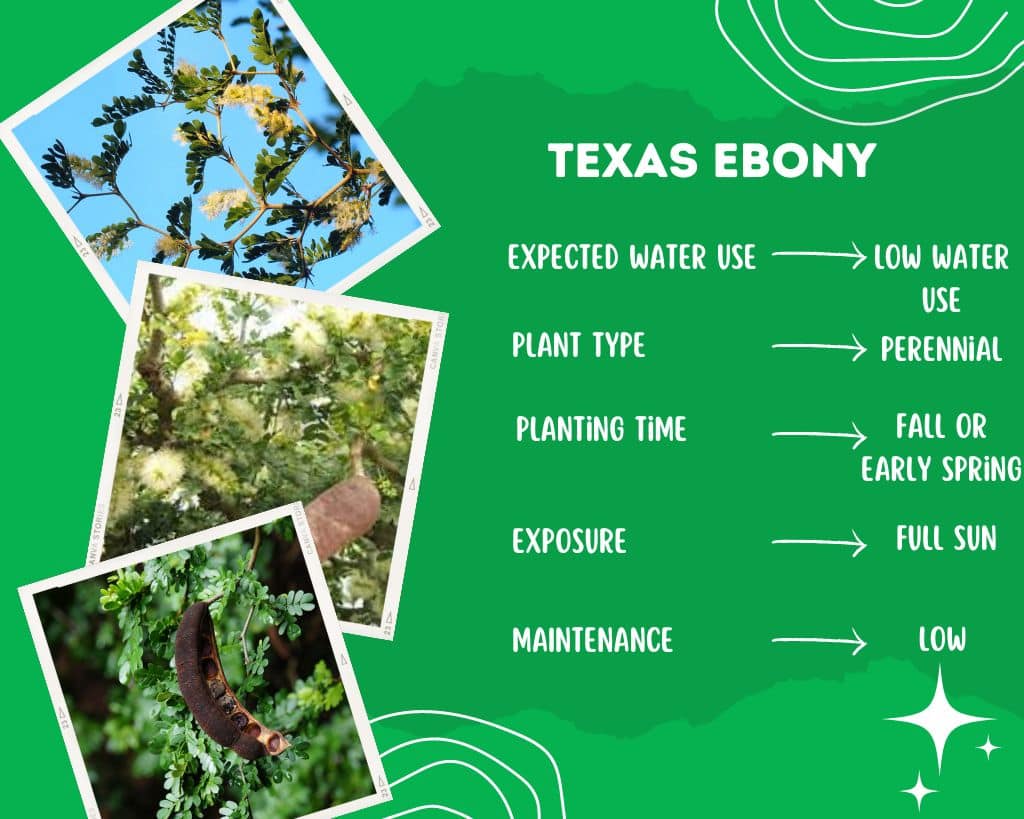
Native to the Chihuahuan desert, this remarkable tree can withstand longer drought periods without any fuss. With its evergreen foliage, it stays green throughout the year. In early fall, it produces small, delightful clusters of flowers. Growing up to 30 feet tall, it’s an excellent choice for providing refreshing shade in your landscape.
- Height: 15-30 feet
- Spread: 15-20 feet
- USDA Zones: 8-11
- Common Names: Black-bead Ebony, Ebony Ape’s-earring, Ebano
Mexican Palo Verde (Parkinsonia aculeata)
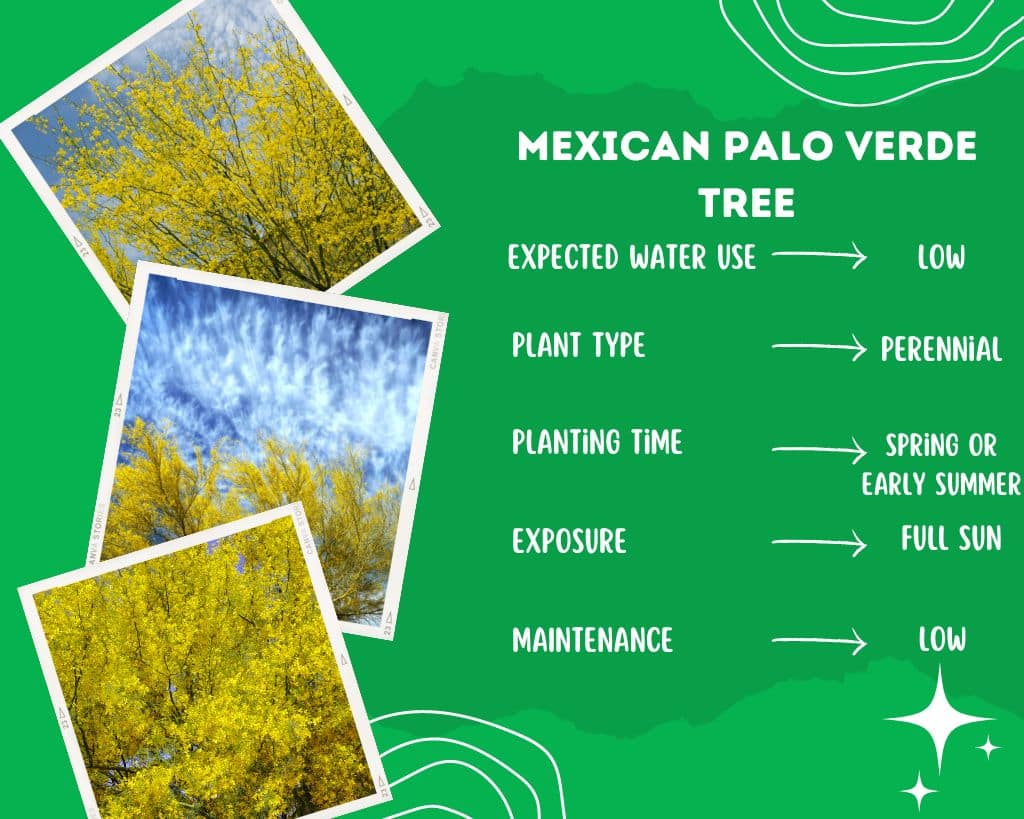
This small to medium-sized tree boasts beautiful yellow flowers that bloom in spring and early summer. It is fairly drought-tolerant and grows well under full sun. With low maintenance requirements, it’s perfect for those seeking a stunning tree without loads of upkeep.
- Height: 15-30 feet
- Spread: 15-20 feet
- USDA Zones: 8-11
- Common Names: Jerusalem Thorn, Horsebean, Lluvia De Oro
Cedar Elm (Ulmus crassifolia)

Another fantastic tree for a drought-tolerant landscape, the Cedar Elm, can withstand dry periods. It is the most commonly grown elm tree, that you find easily in East, Central, and South Texas. Its striking silvery foliage and fragrant flowers in early fall add beauty to your surroundings. Growing up to 50 feet tall, it’s an ideal choice for providing ample shade.
- Height: 30-50 feet
- Spread: 25-35 feet
- USDA Zones: 6-9
- Common Names: Fall Elm, Basket Elm, Scrub Elm, Lime Elm, Texas Elm
Vibrant Shrubs and Flowers
Yaupon Holly (Ilex vomitoria)

This popular evergreen shrub is widely used as a formal hedge or foundational planting. It’s capable of withstanding hot summers and infrequent water supply. With fragrant flowers in spring and evergreen foliage all year, this plant can easily attract birds and butterflies, bringing more life to your garden.
- Height: 15-25 feet
- Spread: 10-15 feet
- USDA Zones: 7-11
- Common Names: Cassina
Anacua (Ehretia anacua)
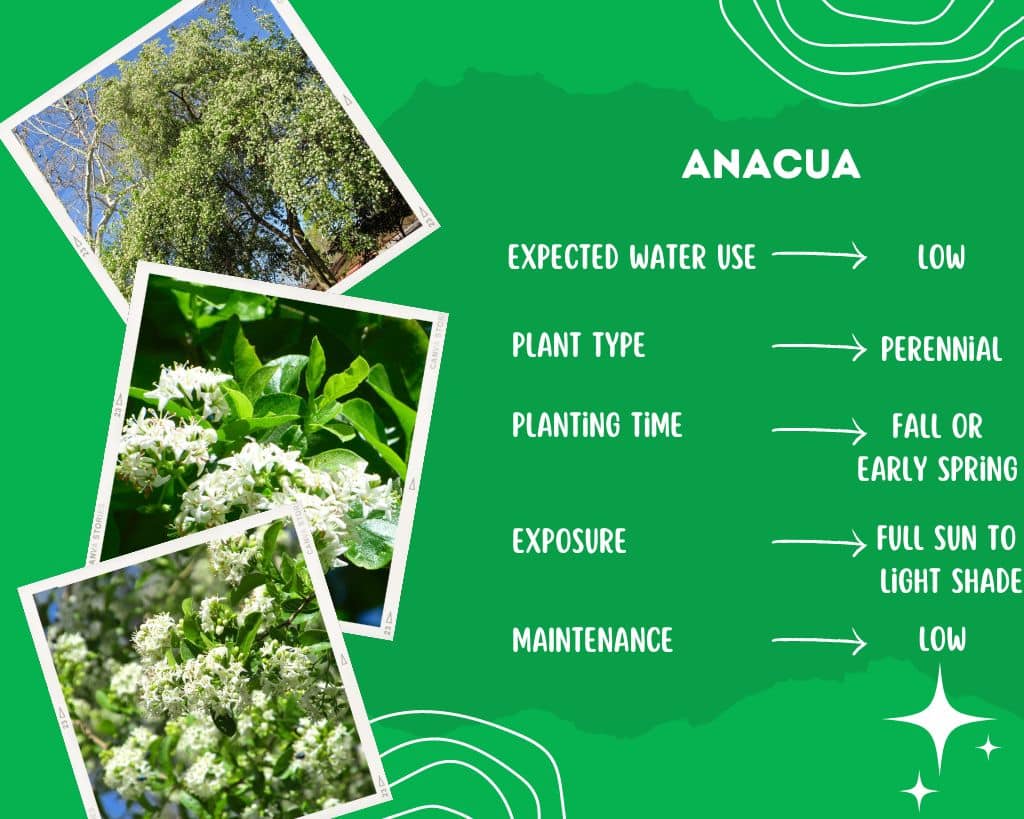
This small evergreen tree is highly regarded for its drought tolerance ability. It can tolerate dry weather conditions and require less maintenance while producing fragrant flowers in spring. Its vibrant green foliage remains fresh throughout the year, attracting butterflies and hummingbirds.
Also Read: Drought-Tolerant Plants For North Texas: Flourish Without The Fuss
- Height: 15-30 feet
- Spread: 15-25 feet
- USDA Zones: 9-11
- Common Names: Sugarberry Anacua, Anaqua, Anacahuita, Knockaway, Knackaway, Sandpaper Tree,
Gulf Coast Penstemon (Penstemon tenuis)
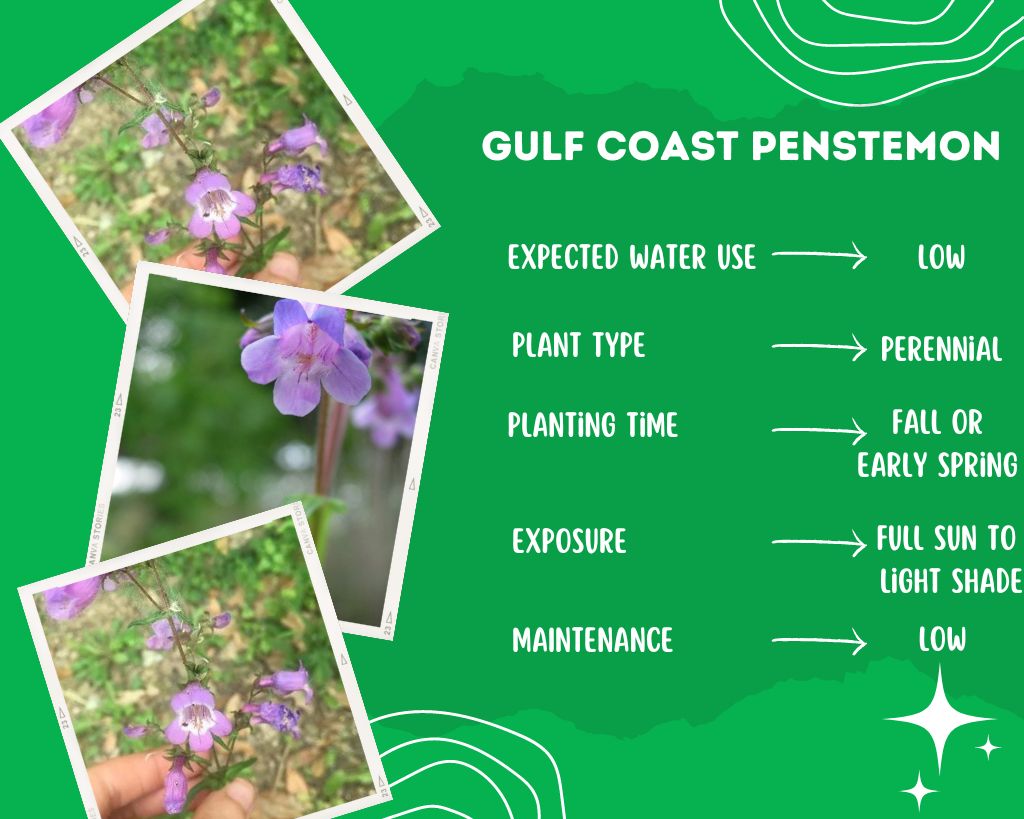
With beautiful purple flowers blooming in spring and early summer, this Texas native perennial flower is highly drought resistant. Its delightful flowers are known to attract hummingbirds and butterflies.
- Height: 2-3 feet
- Spread: 2-3 feet
- USDA Zones: 7-10
- Common Names: Brazos Beardtongue, Gulf Penstemon, Gulf Beardtongue, Gulf Coast Penstemon, Gulf Coast Beardtongue
Turk’s Cap (Malvaviscus arboreus var. drummondii)
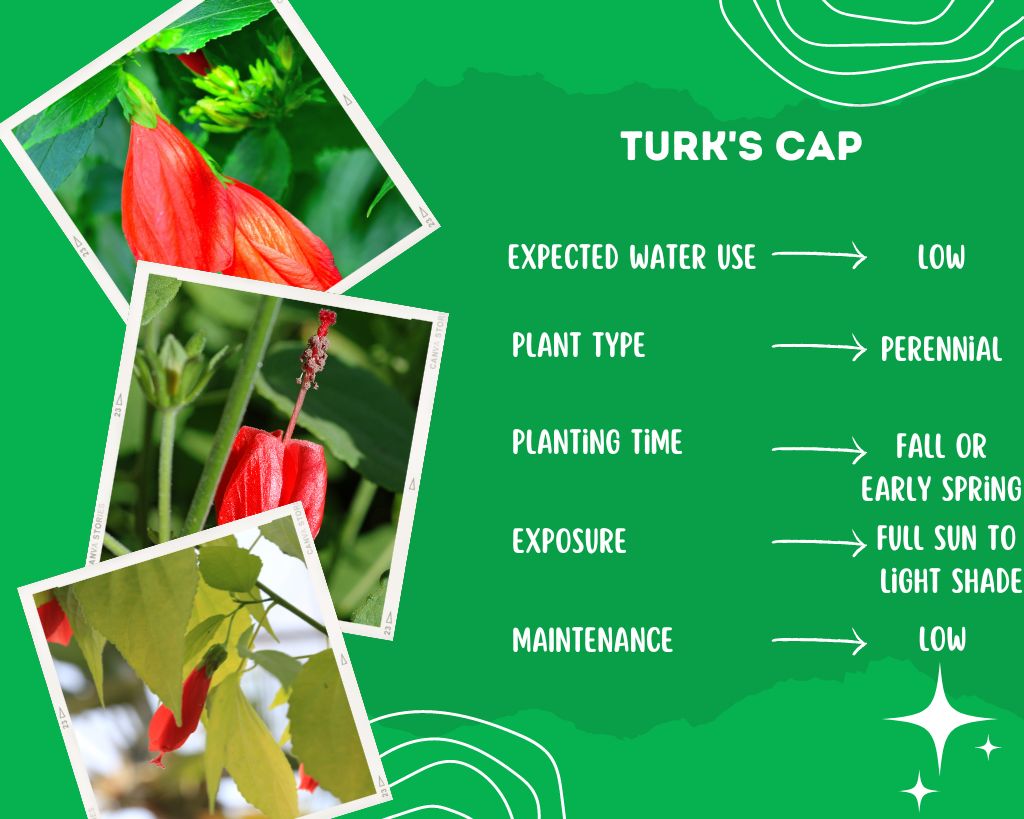
Native to Texas, this alluring shrub handles dry conditions and full sun with ease. It presents eye-catching red flowers that bloom during summer and fall. Furthermore, the Turk’s Cap is a magnet for butterflies and hummingbirds, providing a lively display in your garden.
- Height: 3-6 feet
- Spread: 3-6 feet
- USDA Zones: 8-11
- Common Names: Drummond’s Turk’s Cap, Drummond Turk’s Cap, Wax Mallow, Drummond’s Wax Mallow, Drummond Wax Mallow, Red Mallow, Texas Mallow, Mexican Apple
Succulents & Cacti
Parry’s Agave (Agave parryi)

One of the most commonly found succulent in South Texas gardens, Parry’s Agave, also known as Century Plant, is known for its attractive evergreen foliage and clump forming habit.
This drought-tolerant perennial can survive extreme drought conditions. Fully established plants require very low maintenance.
- Height: 1-3 feet
- Spread: 2-4 feet
- USDA Zones: 7-10
- Common Names: Parry’s Agave, Century Plant
False Agave (Manfreda maculosa)

Sporting silvery foliage, this native Texan succulent can endure harsh growing conditions and full sun. In summer, it produces tall spikes of pink flowers, enhancing the visual appeal of your landscape. Its unique characteristics make it a fascinating addition to any garden.
- Height: 1-2 feet
- Spread: 1-2 feet
- USDA Zones: 7-10
- Common Names: Texas Tuberose, Rattlesnake Agave, Spice Lily
Engelmann’s Prickly Pear (Opuntia engelmannii)
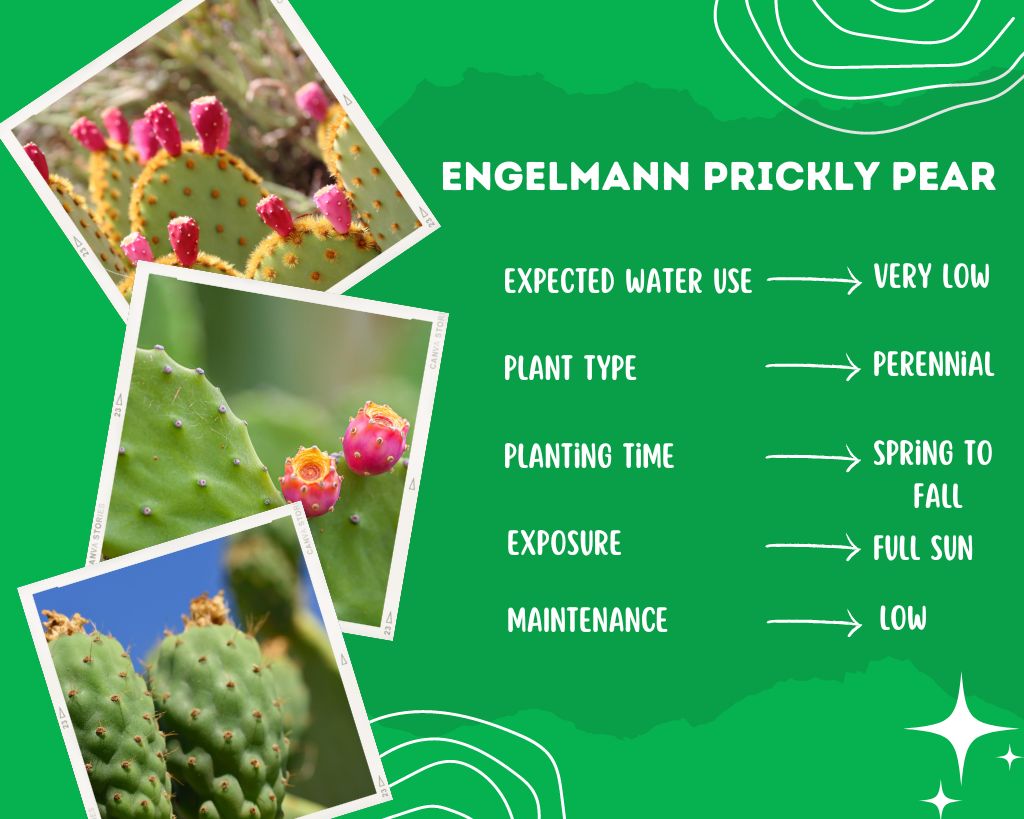
As a captivating cactus native to Texas, this plant flourishes in dry weather and full sun. Its vibrant yellow flowers bloom during spring and early summer, brightening up your landscape. The Opuntia engelmannii adds intrigue and interest to any environment.
- Height: 1-4 feet
- Spread: 3-6 feet
- USDA Zones: 6-10
- Common Names: Engelmann’s Prickly Pear, Cactus Apple
Horse Crippler Cactus (Echinocactus texensis)

Another enchanting cactus native to Texas, the texensis withstands extremely hot conditions effortlessly. Its gorgeous red flowers bloom in summer and fall, creating a stunning display. With its vibrant colors, it’s a surefire way to add visual interest to your landscape.
- Height: 4-6 inches
- Spread: 6-12 inches
- USDA Zones: 7-11
- Common Names: Devil’s Head, Chisos Hedgehog Cactus
Ground Covers and Grasses
Silver Ponyfoot (Dichondra argentea)

This lovely ground cover with silvery foliage is perfect for a drought-tolerant landscape. It can handle dry conditions and full sun while adding a touch of color to your surroundings. Its year-round greenery makes the Silver Ponyfoot an attractive choice.
- Height: 2-4 inches
- Spread: 3-6 feet
- USDA Zones: 8-11
- Common Names: Silver Ponyfoot, Silver Ponysfoot
Carolina Wild Petunia (Ruellia caroliniensis)

Native to Texas, this perennial flower is an ideal pick for dry conditions and full sun. Its charming pink flowers bloom in summer and fall, adding a splash of color to your landscape. Additionally, the Carolina Wild Petunia attracts butterflies and hummingbirds, enhancing your garden’s charm.
- Height: 1-2 feet
- Spread: 1-2 feet
- USDA Zones: 6-10
- Common Names: Carolina Wild Petunia
Big Muhly (Muhlenbergia lindheimeri)
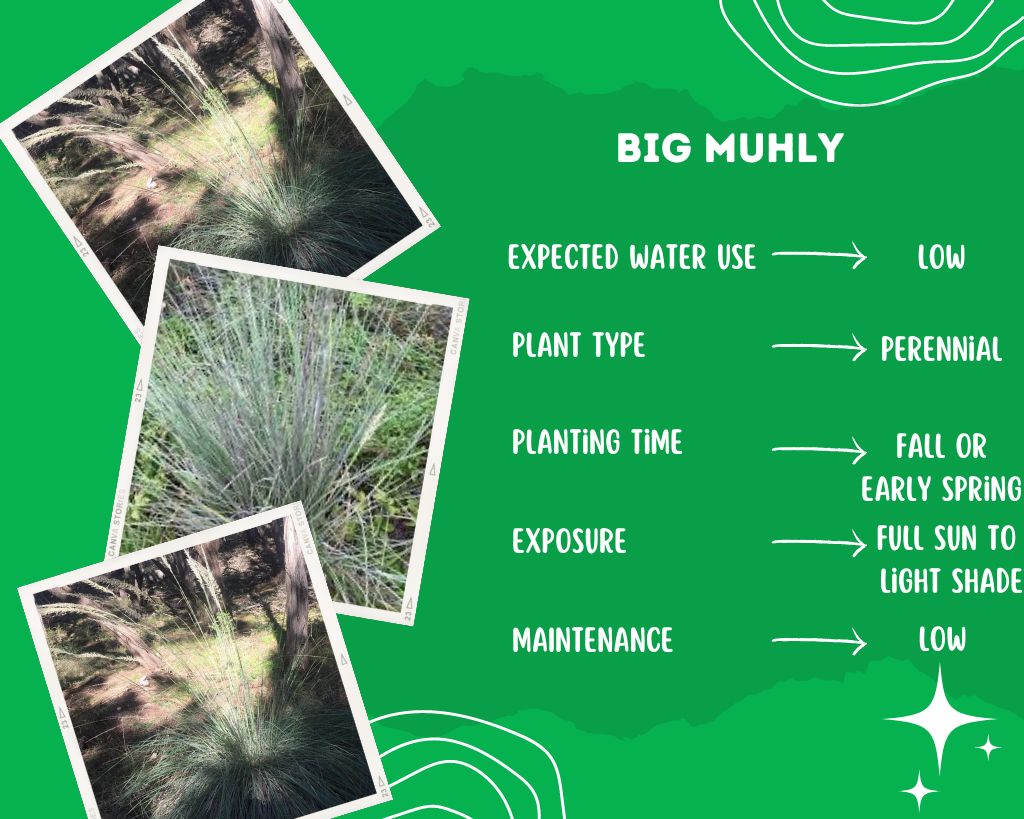
A beautiful native grass to Texas, Gulf Muhly is extremely drought tolerant. Its pink flowers create a delightful spectacle during the fall. With its vibrant hue, this grass elevates the visual appeal of any landscape.
- Height: 2-4 feet
- Spread: 3-4 feet
- USDA Zones: 6-9
- Common Names: Big Muhly, Lindheimer’s Muhly
Buffalograss (Bouteloua dactyloides)

One of the favorite drought-tolerant grasses of South Texas gardeners, Buffalograss is a well-known warm season ornamental grass that boasts of blue-green curly leaves.
- Height: 4-8 inches
- Spread: 1-2 feet
- USDA Zones: 3-9
- Common Names: Buffalograss
Vines to Elevate Your Garden
Climbing Aster (Symphyotrichum carolinianum)

This sprawling woody shrub is a deciduous vine that is grown on a trellis or a fence. What sets this vine apart from others is the beautiful, fragrant blooms it produces. Its aroma is known to attract butterflies and bees.
- Height: 3-6 feet
- Spread: 2-4 feet
- USDA Zones: 4-9
- Common Names: Climbing Aster
Yellow Trumpet Vine (Campsis radicans)
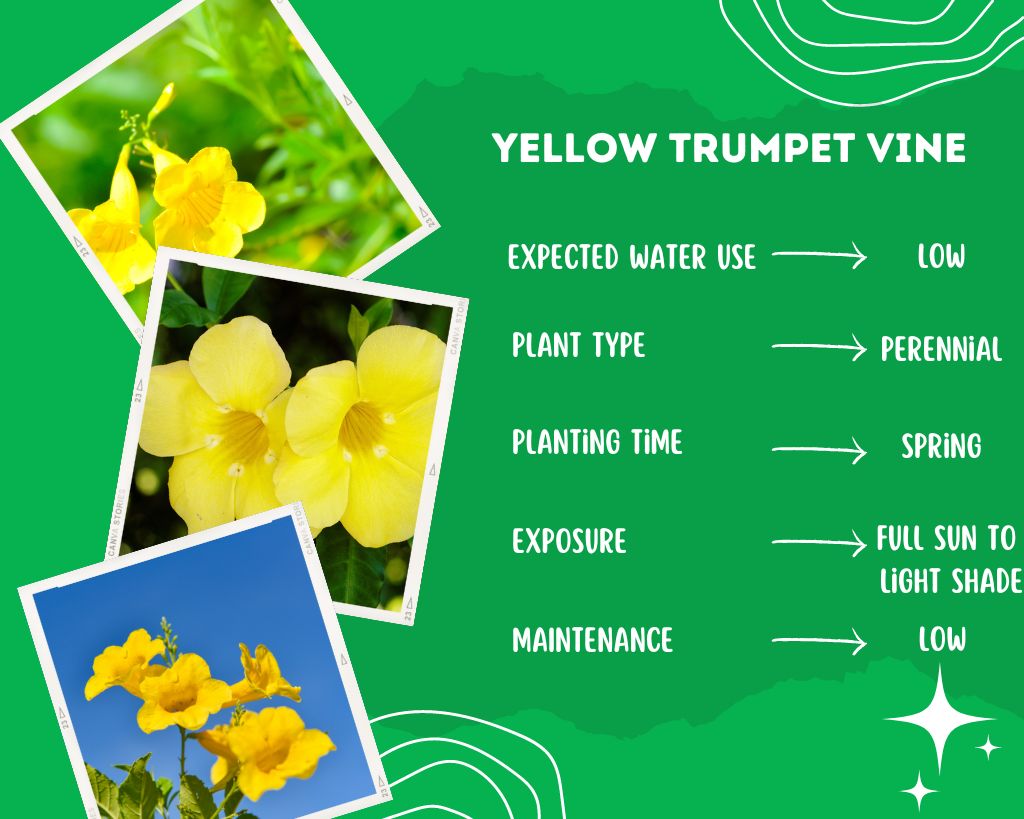
Yellow trumpet vine is a perfect fit for a drought-tolerant landscape. With its ability to withstand dry conditions and full sun, it produces beautiful yellow flowers in summer and fall. The Yellow Trumpet Vine effortlessly attracts butterflies and hummingbirds, creating a lively atmosphere in your garden.
- Height: 20-30 feet
- Spread: 6-10 feet
- USDA Zones: 4-9
- Common Names: Yellow Trumpet Vine, Trumpet Creeper
Bonus: 10 Drought-Tolerant Plants For South Texas
Mexican Plum (Prunus mexicana)
Chittamwood (Bumelia spp.)
Sage (Salvia spp.)
Lantana (Lantana spp.)
Red Yucca (Hesperaloe parviflora)
Agave lechuguilla (Lechuguilla)
Lamb’s Ear (Stachys Byzantina)
Curly Mesquite Grass (Hilaria belangeri)
Climbing Aster (Symphyotrichum carolinianum)
Purple Passionflower (Passiflora incarnata)
FAQs
Why select native plants over non-native drought-tolerant plants for South Texas?
Natives require less water and require minimal care compared to their non-native counterparts.
How can we further reduce the amount of water required?
Select the best suited grass for your lawns, plant shrubs and flowers in the flower beds, group the plants with similar watering needs together, and try to include more trees in your garden.




